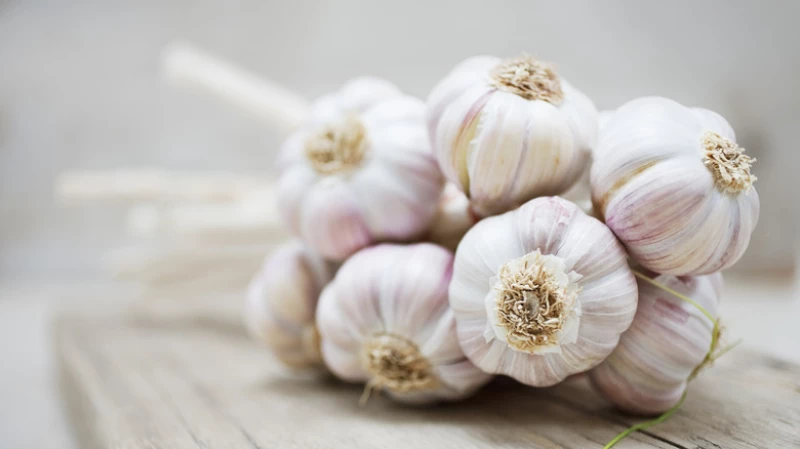Garlic, a truly unique vegetable, stands out from its onion cousins with its many properties. It can be used in various forms - as a seasoning, baked, roasted, crushed, sautéed, or even mushed into a paste. Not only does garlic add flavor to dishes, but it also offers health benefits such as boosting the immune system and destroying some viruses. Surprisingly, garlic can also serve as a rodent repellent in bird feeders. This small but mighty vegetable has endless perks, including a lesser-known one - garlic juice can be used as glue. So, next time you run out of adhesive or are looking for a natural alternative, give garlic juice a try!
Slice and squeeze for an all-natural paste

You may have noticed when you're chopping a clove of garlic that your fingers come away sticky. This is due to the high amounts of sulfur found within the clove, and just one garlic bulb has over 30 notable sulfur compounds and 10 different sugar compounds. Allicin is a sulfur-based compound that creates the notable smell garlic is known for when the bulb's tissue is affected by outside forces, but it also produces a sticky substance. With the trace amounts of sugar inside of the bulb, this little piece of produce can get quite adhesive if used properly.
In order to make a paste that will keep items together, you need to pull the juices from the garlic bulb by peeling off the outer skin and then using a knife to cleave the cloves in half. Once the inner part of the clove is exposed, you can use your fingers to push the juice to the surface. It's important to remember that this natural 'glue' isn't meant to hold heavy objects together, so don't try and use it to adhere to big pieces, because they might end up more broken than they started. Lightweight materials like thin glass and decorative paper materials can benefit from garlic paste, and if you're in a pinch, this is a great replacement for your staple adhesive. Use a clean, fine-tip paintbrush to add garlic juice to the cracks or tears you need to repair and hold the two segments together so they can set before letting them dry completely.
Instead of reaching for traditional glue, consider using a natural alternative - garlic! Simply crush a clove of garlic and apply the sticky juice as a glue substitute. You can also rub the clove directly on the item you're trying to repair, ensuring the juice is easily accessible. While this DIY glue is effective, it does come with a strong scent, so be prepared for that. If you don't mind the smell, this handy trick can be a go-to solution for all your small repair needs. Plus, you can grow your own garlic using a clever TikTok hack, ensuring you always have a fresh supply of natural glue at your fingertips. You can even grow garlic indoors for easy access!







